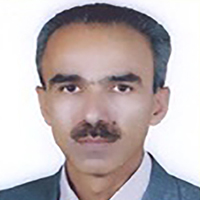Backgrounds of Creation, Performance and Changes in the Position of Khorasan Commander in the Late Safavid Period
Although the Safavids took over the administrative structure of the previous governments, due to the small and big changes that took place, they also made changes in this structure. Among these changes was the creation of a new position in the military affairs of Khorasan province and the surrounding lands called the post of Khorasan commander. This position was added to other military positions during the Shah Safi period, and by the end of the Safavid rule, a large part of the large-scale military affairs were organized through it. This geography included different areas of Khorasan (Herat, Merv and Mashhad) as well as more or less the surrounding lands such as Astarabad, Kandahar and Sistan. In the present article, the author has tried to answer the question: what were the backgrounds of the establishment of the post of Khorasan commander, as well as its performance, changes and developments? This research was done using a descriptive-analytical method. The data was collected examining the available historical sources. The findings indicate that the Khorasan commander is the result of a sense of the need to show a unified and coordinated response initially to the invasions and attacks of the Uzbeks and then other ethnic groups such as the Gurkhanids, Baluchis and Afghans. It has also been in line with the policy of increasing central government influence in the state affairs. This was done by appointing one of the elders, who was generally affiliated with the court, to head the army and send him to Khorasan, depending on factors such as the power and authority of the kings and his concern for the affairs of Khorasan. In periods such as Shah Suleiman and a part of the reign of Shah Sultan Hussein, this position has been severely weakened. Also, it has undergone changes in its history, including the combination between the commander and the state, and has continued until the last years of the Safavid rule (the fall of Isfahan) and even after that.
-
The Sādāt’ Niqābat in the Ilkhanate Period
Rahim Kaviani*,
Quartely Research Journal of Islamic History, -
The Affected Factors in location of Active Cities of the Iranian Southern Coasts in the Early Islamic Centuries
Gholamreza Zaeri, Maghsoudali Sadeghi *, Fateme Janahmadi
Journal of Iranian Islamic Period History, -
The Relationship between the government and the urban society of Shiraz in the Zandiyeh era and its effect on the establishment of the Qajar government
Vahid Kargar Jahromi, Maqsood Ali Sadeghi Gandomani *
Journal of Historical Researches, -
The role of endowment (waqf) and charity in facilitating travel in Iran during the Ilkhanate period
AliReza Karimi, Ali Asghari Chahian Boroujen*
Quartely Research Journal of Islamic History, -
Cultural and political elites of timurid era of harat at safavid epoch
Maghsud Ali Sadeghi Gandomani, , mortaza dowlatabadi*
Tahqiq?t-e T?rikh-e Ejtem?’i, -
Different Appearances and Usages of Archaism and Sabzevari Dialect in Mahmoud Dowlat Abadi's Kelidar
Zohre Allahdadi Dastjerdi, Alireza Abedian,
Journal of Literary Studies,




